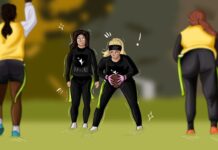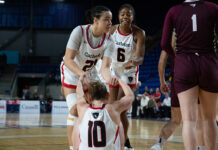A team of Carleton students, called Ember Collegiate, finished in the top 16 at the Heroes of the Dorm eSports tournament last week.
They competed in a 64 team bracket against university students across North America in a video game called Heroes of the Storm.
“Best way to describe [the game] is a five on five action game where each player gets to control their own individual character and you work together as a team to complete objectives on the map,” said James Fitzgerald, one of the players on the team.
“And then eventually the end goal is to destroy the enemy’s home base and in this case it is called ‘the core,’” he said.
Another team member, Noah Sternberg, said that there are roles in the game, helping develop teamwork.
“Certain people heal teammates, that was my general role. . . You tend to specialize in a role and you do have certain people that you are better at because you play it more often,” he said.
Third-year player Justin Rodriguez said the different tasks helps develop a team composition.
“For example, my role was basically to flesh out our composition. So I’d play from healers to assassins just to sort of round off our team better, for what our team needed for that specific objective,” he said.
This was the second year of the Heroes of the Dorm tournament. The tournament was first held in April 2015 ahead of the full release of the game in an effort to promote it. That year, Carleton also finished in the top 16.
“Heroes of the Dorm is trying to be the March Madness of video games,” Fitzgerald said. “It starts off with a bunch of schools, at the beginning, at the group stage you really don’t look too much into your opponents because of the big skill gap between a high end school and a low end school,” he said. “You can basically just play your game and expect to do well but as you get closer to the bracket stage you have people trying to figure out each others strategies, trying to hide compositions and plays to throw people off. Thats where it really starts to get fun, strategically.”
As the tournament progressed, the team would analyze their opponent ahead of time to prepare for the match.
“As it got closer to the big top 16, you start to have recognizable names and a lot of information gets released because of the way the tournament is being advertised,” Fitzgerald said.
“Other teams will have interviews up—there will be stats posted for each individual player,” he said.
“We also have access to some videos of previous games, so we view that as a team and decipher how they like to play and analyze what we want to do to try and beat them,” Rodriguez said.
Ember Collegiate defeated Santa Clara University and the University of Texas at Dallas before falling to the University of Texas at Arlington. Three players from the Arlington team were professional Heroes of the Storm players, but unlike other NCAA or CIS sports, professionals can compete in the tournament as long as they are students.
The games were streamed online on websites such as Twitch, YouTube, TSN, and ESPN.
The teams said despite what think is a stigma around watching video game competitions, they received plenty of support throughout the competition.
“There was a lot of people from Carleton that had no idea what was going on but were really happy to support us,” Fitzgerald said.
“It’s like the Panda Game or Capital Hoops, not everyone there is a big sports fan, but they like getting behind the crowd mentality and having something to cheer for.”
“My family members that were watching, they would tell me afterwards, how they would know if we were doing really bad or really good just by how the broadcasters and commentators are showing the game,” Sternberg said.
“It’s a lot of fun, it gets people engaged,” Fitzgerald said. “People enjoy watching it, we enjoy playing for people, and it’s an all around good time for everyone.





